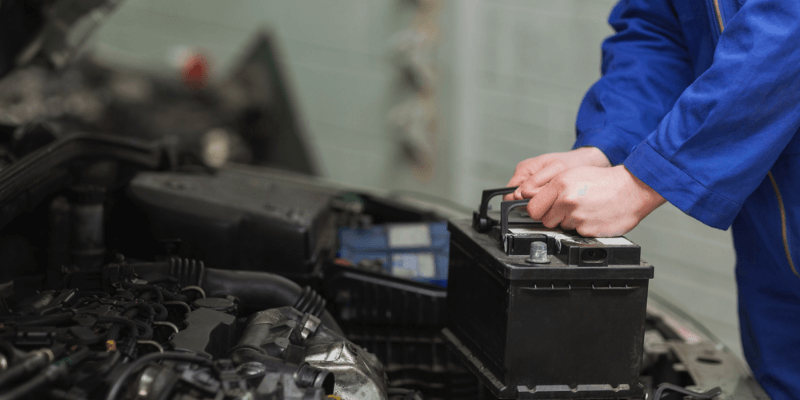 Swipe for more categories
Swipe for more categories 
Batteries
Warning: Undefined variable $post_id in /var/www/dsw/wp-content/themes/DriveSmart_2024_v1.1/the-complete-guide-to-vehicle-care/template.php on line 33
March 29, 2019
Warning: Undefined variable $post_id in /var/www/dsw/wp-content/themes/DriveSmart_2024_v1.1/the-complete-guide-to-vehicle-care/template.php on line 47
Batteries
Warning: Undefined variable $post_id in /var/www/dsw/wp-content/themes/DriveSmart_2024_v1.1/the-complete-guide-to-vehicle-care/template.php on line 48
March 29, 2019
Batteries

As batteries have advanced greatly over the years, standard maintenance for these batteries has diminished greatly. This is due to the vacuum-tight encasing surrounding the battery. Regardless of advancements, there are still some inspection and maintenance practices that should be performed to allow the optimal operation of a battery.
Clean the Case
Depending on the location of a vehicle’s battery, dirt, oil, and other corrosion can build up on the case of a battery. There is a chance for the residue to cause a current drain on the battery. This issue can be negated simply by wiping down the battery case with a wet rag or paper towel coated with a mild amount of laundry detergent. After the residue is clear, it is advised to dry the battery case and inspect it for cracks or bulging. The presence of either will indicate the need for a replacement.
Clean the Terminals
As a vehicle’s battery ages, thin layers of corrosion may build up on the terminals, battery posts, or other current drawing components. If this happens, reduced engine power may occur, or the vehicle may refuse to start. To clean the corrosion, remove the power terminals from the battery itself, create a 50/50 solution of water and baking soda, and use a stiff brush to apply the solution. The baking soda will interact with the corrosion and break it down to allow the corrosion to be wiped away. Once the battery is free of corrosion, wipe down the terminals with water to clear away the baking soda and dry it thoroughly before re-connecting the battery.
Replacing the Battery
While most mechanics, auto parts shops, or retailers will assist in the installation of a vehicle’s battery, it is important to understand the process in the event it needs to be replaced without assistance. To remove a battery from a vehicle, remove the two cables connecting to the terminals. It is important the negative connector is removed first, and the positive connector second. Once these connectors are removed, lifting the battery will allow it to slide right out. Once removed, insert the new battery directly in the same compartment the old one was removed from. When re-installing the cables, it is important to place the positive connector first and negative second. On some newer vehicles, re-programming is required once the battery is replaced. It is important to consult with a mechanic before replacing a battery to know what will need to be reprogrammed.
"> /var/www/dsw/wp-content/themes/DriveSmart_2024_v1.1/the-complete-guide-to-vehicle-care/template.php on line 149
">
"> /var/www/dsw/wp-content/themes/DriveSmart_2024_v1.1/includes/quote-modal.php on line 8
">




